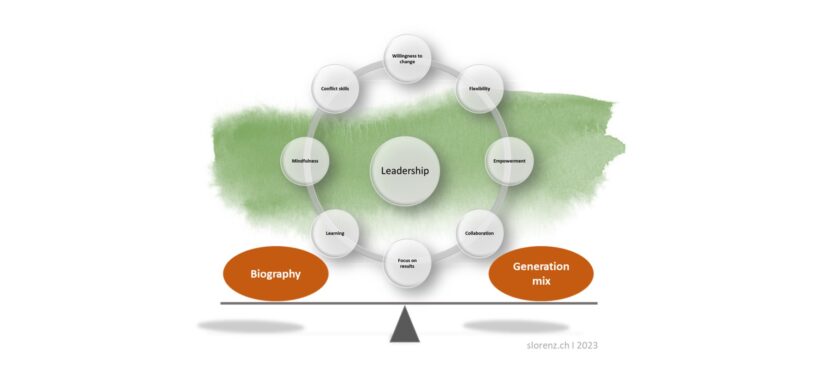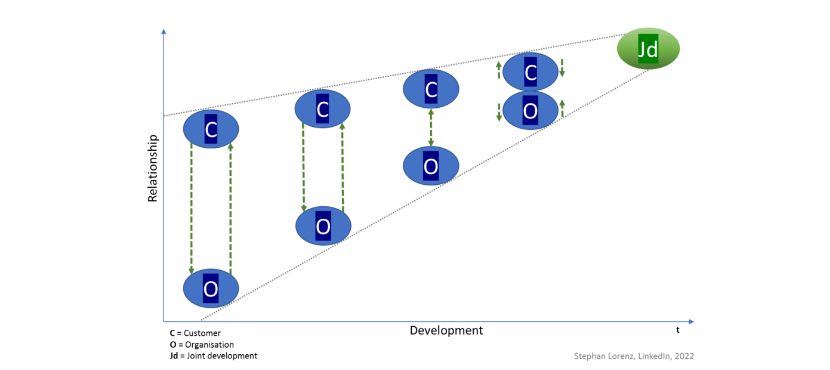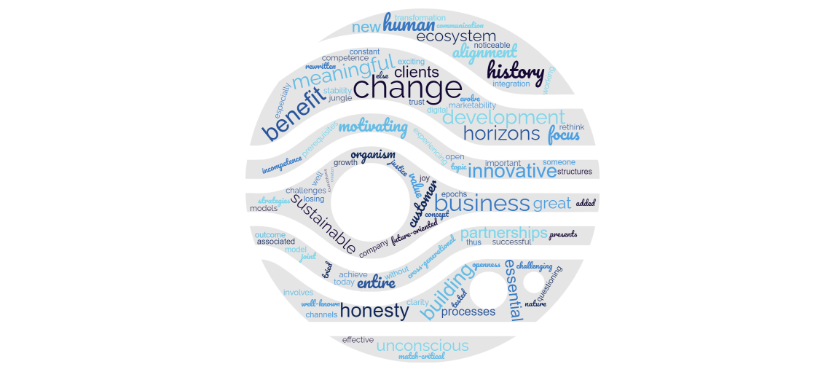Today I would like to share a very exciting topic with you.
Due to the high speed in today’s working world, countless stumbling blocks have crept in for which we (can) spend little time, but which confront us again and again with new challenges. However, these are usually not of a technical, but rather of a human nature. Why is that?
From my experience, I see 2 important elements that lead to these challenges:
1) our biography
2) the generation mix
⇨ Our biography and life experiences can have a significant impact on our behaviour and personality. Here are some aspects that explain the effect of our biography on our behaviour:
👉 Formative experiences: Early experiences such as our childhood, family life and education can shape our self-image and attitudes. For example, a stressful childhood can lead to a lack of confidence and low self-esteem, while a supportive environment can lead to higher self-esteem and confidence.
👉 Cultural influences: The culture we are raised in can influence our values, beliefs and behaviours. For example, a society that emphasises achievement and success can lead to high levels of competitiveness and self-motivation.
👉 Social environment: Our family, friends, colleagues and community can influence our behaviour and personality. For example, we may adopt certain behaviours from our friends and colleagues or learn certain values from our family.
👉 Traumatic experiences: Traumatic events such as violence, abuse or loss can have a profound effect on our behaviour. These experiences can lead to trauma and mental illness, which can affect our behaviour and personality.
⇨ The generational mix today demands an increasing sensitivity in leadership to understand and meet the different needs of the generations. Here are some generational developments in the current work environment:
👉 Baby boomers: the baby boomer generation, born between 1946 and 1964, is one of the largest generations in the labour market. Many baby boomers worked in a time when job security and financial stability were paramount. They are often loyal employees who have pursued long careers in a company.
👉 Generation X: Born between 1965 and 1980, Generation X is a generation that grew up in a time of change. Many of them have experienced the effects of globalisation, technology development and changes in the working world. Generation X employees are often very self-reliant and independent, and they prefer flexibility and work-life balance.
👉 Generation Y/Millennials: Generation Y, also known as Millennials, was born between 1981 and 1996. This generation has grown up in a time of technological change and connectivity and therefore often has a stronger connection to technology than older generations. Millennials often prefer a flexible work environment and look for meaning in their work.
👉 Generation Z: Born after 1996, Generation Z is a generation that has grown up in a highly digital world. This generation often has a strong digital literacy and expects a modern working environment from their employer. Generation Z employees often prefer a transparent company culture and a clear connection between their work and a higher purpose.
❓ So how can I as a leader deal with these two elements? What helps me create a fruitful climate where satisfaction and enthusiasm inspire?
I believe:
📌 Willingness to change: the transition from the industrial age to the agile world requires a willingness to change. Leaders should be open to new ideas and methods and be willing to adapt their leadership skills.
📌 Flexibility: Agile leadership requires flexibility and adaptability. Leaders should be able to react quickly to changes in the market and adapt their strategy and plans flexibly.
📌 Empowerment: In an agile world, the leader should not control everything, but empower employees to take responsibility and make decisions themselves. Leaders should encourage their employees to be creative and bring in new ideas.
📌 Collaboration: Agile leadership requires collaboration and open communication between leaders and staff. Leaders should be able to communicate effectively with their staff and work together to find solutions.
📌 Focus on results: In an agile world, leaders should place their focus on results and performance rather than process or control. Leaders should regularly measure the performance of their employees and provide feedback.
📌 Learning: Agile leadership requires continuous learning and training. Leaders should be open to feedback and strive to improve their skills and knowledge.
📌 Mindfulness: Mindfulness can help leaders communicate better with their staff, make decisions more effectively and manage stressful situations better. Leaders can practice mindfulness through various exercises such as meditation, breathing exercises or yoga to strengthen their capacity for mindfulness.
📌 Conflict skills: Developing conflict skills can help one deal more effectively with conflict, whether in personal or professional situations. By developing these skills, one can help resolve conflicts more quickly and effectively and improve relationships with others.
🚀 I am convinced that by continuously practising these skills, the personality is strengthened, thus enabling us to make a positive contribution for the future. For the people and for the organisation.
What are your experiences with this input?
Looking forward to your feedback & best regards
Stephan





